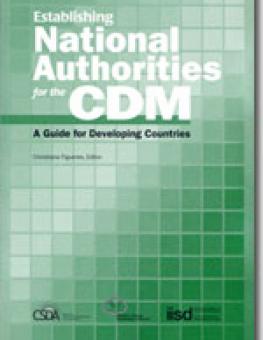
Establishing National Authorities for the CDM - A Guide for Developing Countries
The United Nations has provided a framework for an effective and equitable global response to this challenge—the 1992 Convention—and the first building block of that response, the 1997 Kyoto Protocol. Yet the emission reduction targets in the Protocol, modest as they are in environmental terms, have generated economic resistance in industrialized countries and, notably, the rejection of the Protocol by the U.S.
The withdrawal of the largest emitter will undoubtedly weaken the initial impact of the Protocol. But the Protocol is more than a first set of targets. It also a method for approaching the collective task of limiting emissions, a set of mechanisms largely and paradoxically "made in the USA." The possibility of acquiring emission reductions offshore is a main feature of these mechanisms. The period ahead is one in which these mechanisms will be tested and improved. Hopefully, the parallel system that may be developed by the United States will also encourage recourse to "Kyoto-type" mechanisms by American corporations, thus contributing to the stock of experience and boosting global market demand for offshore emission reductions.
You might also be interested in
July Edition | Carbon Minefields Oil and Gas Exploration Monitor
In June 2024, six governments issued 18 oil and gas exploration licences with embodied emissions of 14.7 MtCO2, led by Russia and China.
Global Dialogue on Border Carbon Adjustments: The case of Brazil
This report consolidates, analyzes, and presents the views and perspectives of stakeholders from Brazil on border carbon adjustment (BCA) schemes to contribute to the global debate on BCA good practices.
Border Carbon Adjustments: Trinidad and Tobago country report
This report consolidates, analyzes, and presents views and perspectives of stakeholders from Trinidad and Tobago on border carbon adjustment (BCA) schemes to contribute to the global debate on BCA good practices.
SUNCASA
The Scaling Urban Nature-based Solutions for Climate Adaptation in Sub-Saharan Africa (SUNCASA) project aims to enhance climate resilience, gender equality and social inclusion, and biodiversity protection in urban communities in Dire Dawa (Ethiopia), Kigali (Rwanda), and Johannesburg (South Africa). Focused on community-level capacity building and leveraging gender-responsive nature-based solutions (NbS), SUNCASA will benefit 2.2 million people living in high-flood-risk areas.